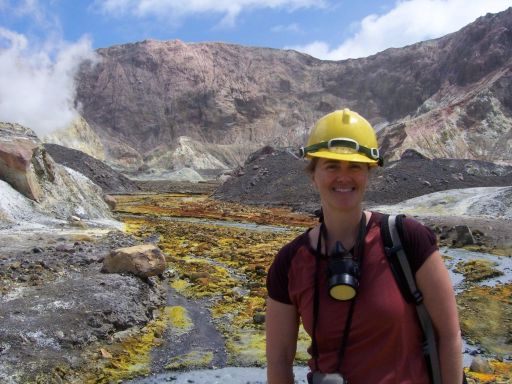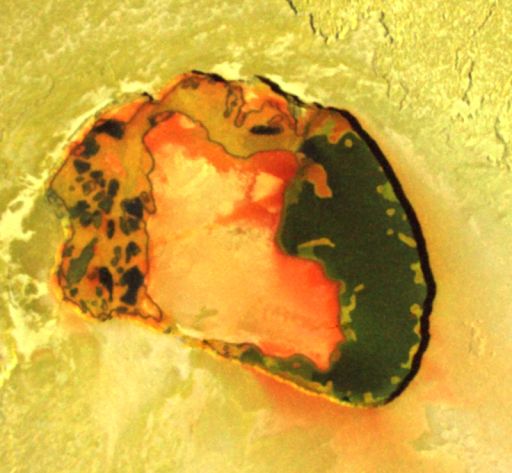Jani Radebaugh • Jul 30, 2009
Islands of Volcanic Paradise
by Jani Radebaugh
Though it's hard to leave Australia, let's turn our attentions to another planetary analog location: the North Island of New Zealand. This is one of the more volcanically active locations in the world, with several active stratovolcanoes (steep-sided volcanoes, like Mount Fuji or Mount St. Helens), a fairly young caldera (large volcanic depressions from super eruptions, think Yellowstone), and hydrothermal fields with colorful hot pots and geysers. My interest in volcanoes stems from my studies of Jupiter's innermost satellite, Io, which has hundreds of active volcanoes dotting its surface. On Io, we see interactions between silicate lavas, like basalts, and sulfur, a volatile that exists in abundance on the surface of Io. Sulfur in its different forms and combinations on Io creates a variety of colors, ranging from red to yellow to orange, and even green and black. We like to visit similar features on Earth so we can see these relationships up close.
The active volcano White Island is located just 30 or so miles off the north coast of New Zealand. The island is privately owned, and you can access it by helicopter or small aircraft, but I opted to travel out to visit by boat last February. The tours are run by Pee Jays, an organized and knowledgeable group that helps you really make the most of your experience at the volcano. The boat approaches the volcano through a breach in the 2 km wide summit caldera, so you can actually step right inside the caldera. This is the summit caldera of a stratovolcano, a steep-sided volcano made up of basalts and andesites (slightly more silica than basalt), the rest of which is below the ocean surface. Once inside the caldera, you can walk right up into the gaping maw of the active volcano, with gushing steam vents and flowing rivers of acid water. The Pee Jays guides provided us with gas masks - a mere precaution, I thought - but I used mine probably a dozen times. At active volcanoes, there are many toxic gases emitted from the volcano, primarily CO2 and SO2 and H2S, so it's good to have along gas masks.
Support our core enterprises
Your support powers our mission to explore worlds, find life, and defend Earth. You make all the difference when you make a gift. Give today!
Donate

 Explore Worlds
Explore Worlds Find Life
Find Life Defend Earth
Defend Earth





